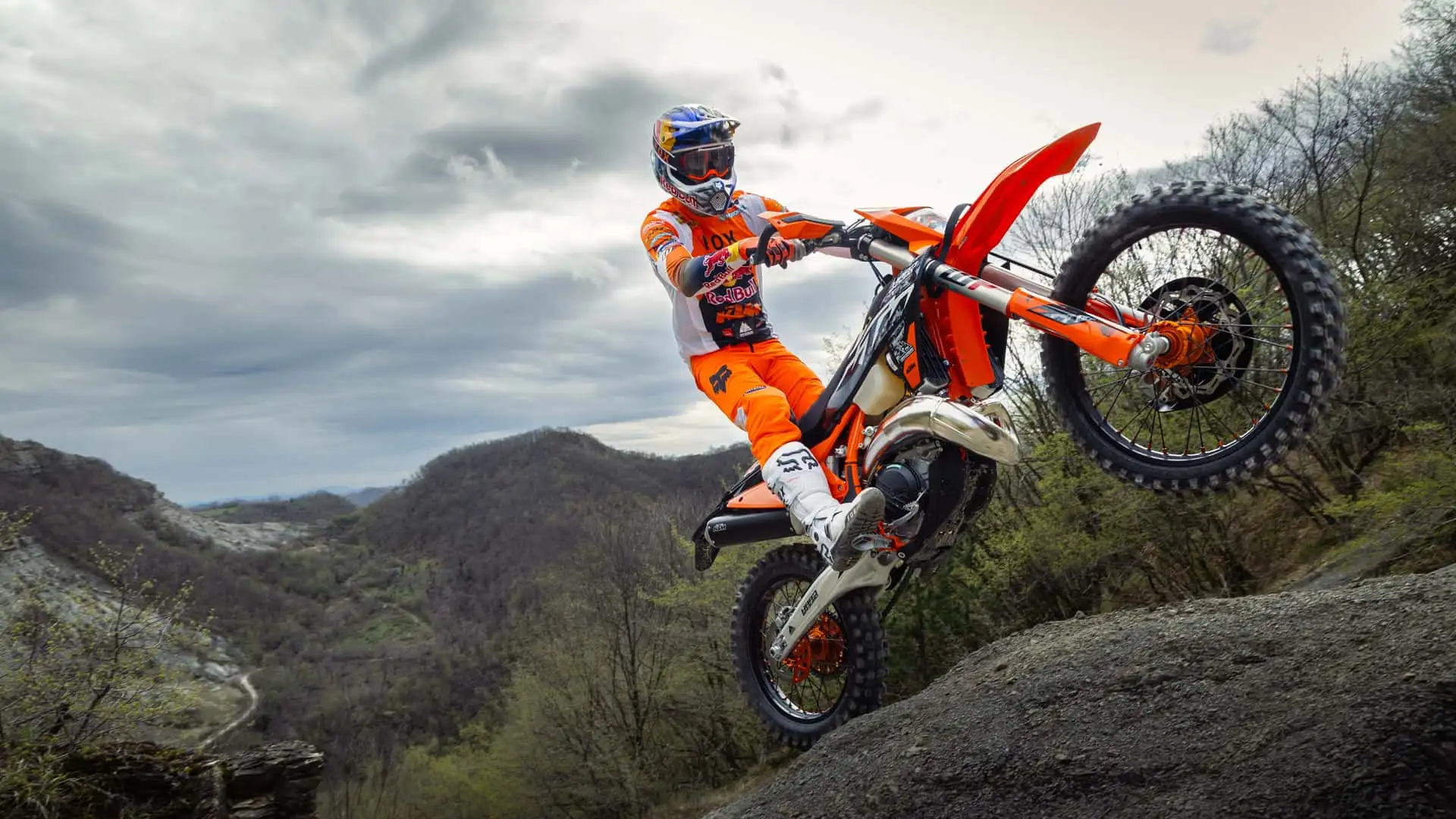Quick Summary
- PDS (no linkage under the swingarm): max ground clearance, fewer snag points, slightly lighter, low maintenance; excels in slow, technical hard enduro. Bottoming control is handled inside the shock via position‑sensitive damping.
- Linkage (leveraged shock): external progression allows finer tuning, more predictable ramp‑up, and superior bottoming resistance at speed. Needs a linkage guard and more frequent bearing service.
When PDS wins
- Extreme rock ledges and repeated log/step hits where linkage hang‑ups cost time
- Riders prioritizing maximum reliability and minimal maintenance/weight
- Remote tours or races where bearing service time and parts access are limited
When Linkage wins
- Mixed HE/XC with higher‑speed whoops, jumps, and hard drops
- Riders who want the most precise, repeatable damping behavior and frequent tuning changes
- Heavier/aggressive riders who need consistent bottoming protection
Setup Notes
- Sag targets: PDS 35–40 mm static; Linkage 30–35 mm static. Stay within range.
- Spring first: choose the correct spring to hit sag before touching clickers.
- Revalving: PDS tuning is more interdependent (plushness, mid‑stroke, and bottom‑out all inside the shock). Linkage lets tuners focus mid‑stroke while the geometry supplies progression.
- Common mistakes: lowering links (linkage) distort the leverage curve and can cause tire‑to‑fender contact at full bottom. If you must lower, do internal shock/fork shortening.
What changes on the trail
- Ground clearance and obstacle interaction
- PDS has no hardware below the swingarm, so it glides instead of snagging. Linkage needs an integrated skid/linkage guard, which still slightly reduces clearance.
- Traction and compliance
- PDS is deliberately plush early in the stroke, helping rear‑wheel hookup on slow, choppy climbs. Linkage offers very consistent pressure on slick, long climbs and can be run with softer springs yet still resist bottoming via progression.
- Bottoming and high‑impact safety
- Linkage delivers the most predictable ramp‑up on drops/jumps. PDS relies on its internal position‑sensitive system in the last third of stroke.
- Weight and agility
- PDS saves some weight and unsprung mass. That helps liftability and reduces fatigue in extreme sections.
- Edge case
- In rare tight log/step compressions, lack of linkage articulation can momentarily wedge the rear tire; linkage can sometimes "roll" through better.
Maintenance and durability
- PDS: Fewer pivots and bearings placed higher and better protected; longer service intervals.
- Linkage: Multiple exposed bearings and seals; in muddy/wet racing, service can be needed as often as every 3 races (~7.5 hours). Always run a skid plate with linkage protection.
Height and lowering (short riders)
- Some linkage bikes sit a touch lower stock, but for performance lowering you should avoid external links. Proper method is internal shock shortening matched with fork changes—for both PDS and linkage. Cost/complexity is effectively similar.
Final recommendations
- Pure Hard Enduro (extreme technical, maximum uptime): choose PDS.
- Versatile Enduro/XC mix or high‑level competition at speed: choose Linkage.
See Also
300 Two‑Stroke Buyer’s Guide KTM EXC vs XC‑W (US vs Global) TBI vs TPI vs Carb on 2‑Strokes Hard Enduro Tire Systems: Tubliss vs Mousse vs Advanced Tubes























































